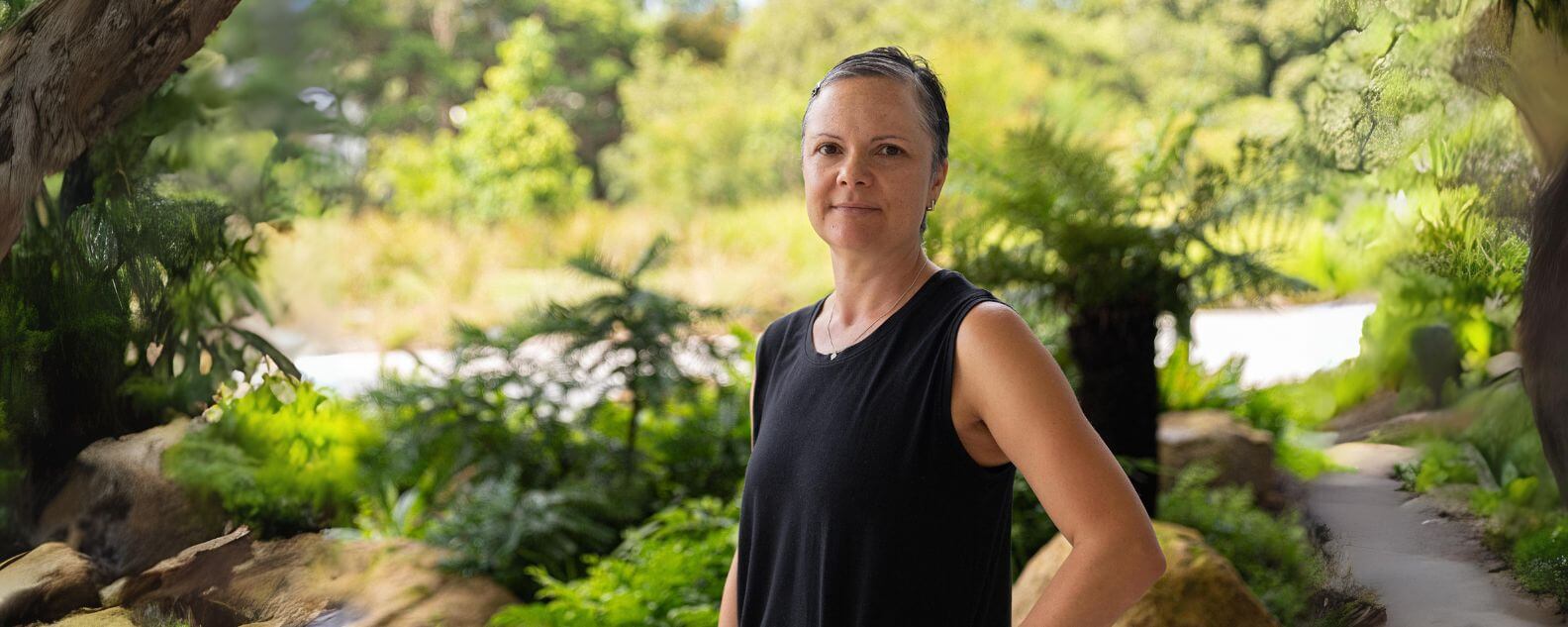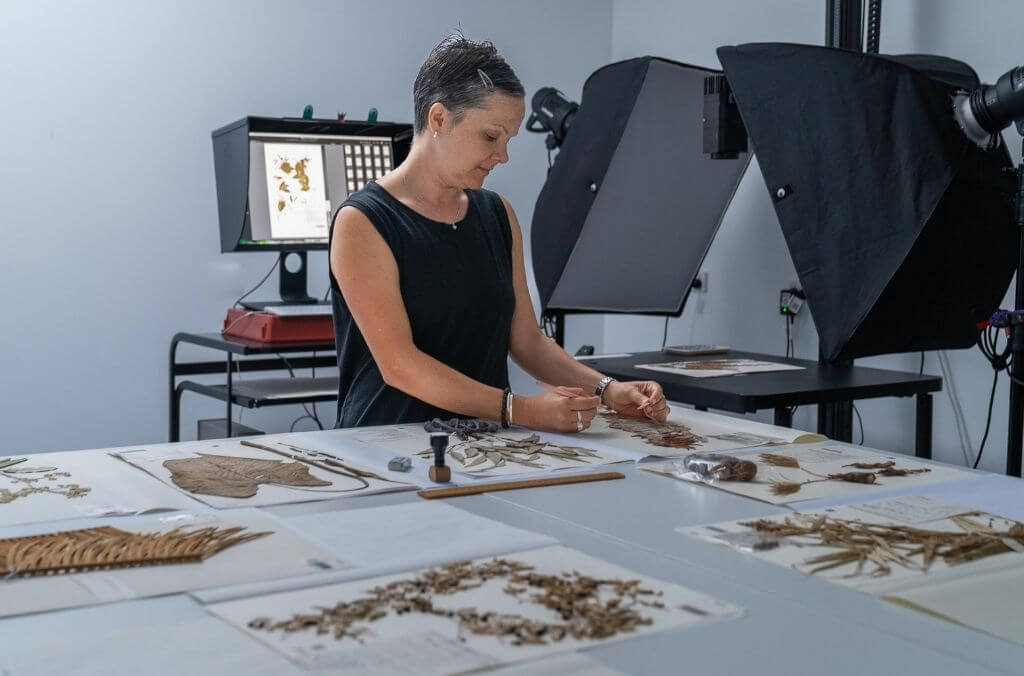
Claire Brandenburger is a Digital Curator at the National Herbarium of New South Wales at the Australian Botanic Garden Mount Annan.
With a passion for digital curation and botanical research, Claire and her team are responsible for digitising the growing collection of over 1.4 million plant specimens in the herbarium. Their work involves capturing high-resolution images of specimens and making them available online to researchers and plant enthusiasts worldwide.
Equipped with both physical and digital curation skills, the digitisation team ensure that the herbarium specimens are properly prepared for imaging, perform quality control checks on the images, and collaborate with other institutions for specimen exchange. Each day brings a variety of tasks, including specimen preparation, image review, and coordinating work placement programs for undergraduate students.
One of Claire's favourite work memories is witnessing the departure of the first truck taking specimens from the original home of the herbarium, the Royal Botanic Garden in Sydney, to the new state-of-the-art facility at the Australian Botanic Garden Mount Annan. It marked a significant milestone and the beginning of a promising future for the herbarium and plant conservation outcomes.
Being part of such a renowned scientific institution and contributing to collective knowledge fuels Claire's enthusiasm. She values the diverse range of responsibilities and appreciates the collaborative and supportive team she works with. Her passion lies in the intersection of science, education, and conservation, as she believes that understanding and preserving plant life is vital for a sustainable future.
Claire holds a PhD from UNSW for her research on rapid evolution in introduced plants. Her thesis won the Dean’s Award for Outstanding PhD Thesis in 2020, and she was also awarded the prize for Outstanding Evolution and Ecology Postgraduate Researcher by UNSW’s Evolution & Ecology Research Centre in 2018. Her research centred around the surprising and rapid evolution of the South African beach daisy, Arctotheca populifolia, since the plant arrived in Australia less than 100 years ago.
Amidst the wide range of captivating Australian flora, Claire finds the Grevillea genus particularly lovely. Her love for plants traces back to her childhood, where she spent many happy hours gardening with her granny and learning about plant care and propagation.
Driven by a desire to expand our understanding of the natural world and to inspire others to appreciate its beauty and diversity, Claire is working towards a future where the Botanic Gardens of Sydney is treasured by the people of Sydney and beyond, and is recognised for its scientific and educational contributions.

Top 5 publications
Brandenburger CR, Maslen B, Sherwin WB, Moles AT (2022) Weedy and seedy: the rapid evolution of life-history characteristics in an introduced daisy. AoB Plants 14, plac038. doi:10.1093/aobpla/plac038
Brandenburger CR, Kim M, Slavich E, Meredith FL, Salminen JP, Sherwin WB, Moles AT (2020) Evolution of defense and herbivory in introduced plants - Testing enemy release using a known source population, herbivore trials, and time since introduction. Ecology and Evolution 10, 5451-5463. doi:10.1002/ece3.6288
Brandenburger CR, Cooke J, Sherwin WB, Moles AT (2019). Rapid evolution of leaf physiology in an introduced beach daisy. Proceedings of the Royal Society B. 286, 20191103. doi:10.1098/rspb.2019.1103
Brandenburger CR, Sherwin WB, Creer SM, Buitenwerf R, Poore AG, Frankham R, Finnerty PB, Moles AT (2019). Rapid reshaping: the evolution of morphological changes in an introduced beach daisy. Proceedings of the Royal Society B. 286, 20181713. doi:10.1098/rspb.2018.1713
Rollins LA, Moles AT, Lam S, Buitenwerf R, Buswell JM, Brandenburger CR, Flores‐Moreno H, Nielsen KB, Couchman E, Brown GS, Thomson FJ (2013) High genetic diversity is not essential for successful introduction. Ecology and Evolution 3, 4501-4517. doi:10.1002/ece3.824